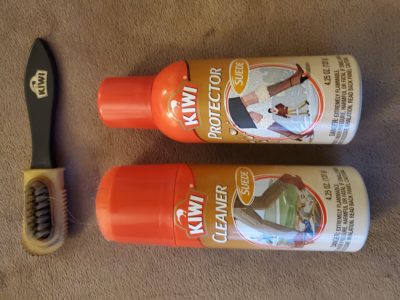 Care of Leather Goods, Part 14
Care of Leather Goods, Part 14
by Steven Ferry
Leather Furniture
Leather furniture either has a protective layer or is unfinished: Unfinished (aniline) leather is full grain leather that has been dyed the whole way through and does not have a protective coating on it, so while on the plus side it ages well, developing a patina, it can stain more easily.
This is simple enough to manage: Apply saddle soap with a damp cloth to any lighter stains; heavier ones, such as ballpoint marks, can sometimes be removed with a Q tip dipped in rubbing alcohol and applied only to the stain. Some aniline leather is injected with oils and waxes and some is nubuck leather that has been buffed to create a velvety feel.
To minimize staining by liquids, tamp immediately with paper towels; oil-based stains that absorb into the leather can be removed, sometimes with multiple applications, using a leather degreaser.
 Leathers with protective coatings that sport a uniform look can simply be dusted with a dry cloth (a vacuum cleaner can be used with a soft-brush or thin attachment where crumbs and dust warrant it) and wiped down with a dampened cloth when needed.
Leathers with protective coatings that sport a uniform look can simply be dusted with a dry cloth (a vacuum cleaner can be used with a soft-brush or thin attachment where crumbs and dust warrant it) and wiped down with a dampened cloth when needed.
Apply a leather conditioner or cream from time to time with a soft cloth to moisturize and soften full grain leather.
As with any leather, do not let furniture sit in direct sunlight, or next to a fire, radiator, or even HVAC vent, all of which will dry and crack the leather over time. One other caveat is to train pets from using leather furniture as a scratching post or chew toy, and even from sitting on it, as their claws can leave random scratches that go beyond an appealing patina.
The Institute is dedicated to raising service standards by broadly disseminating the mindset and superior service expertise of that time-honored, quintessential service provider, the British Butler, updated with modern people skills, and adapted to the needs of modern employers and guests in staffed homes, luxury hotels, resorts, spas, retirement communities, jets, yachts & cruise ships around the world.









